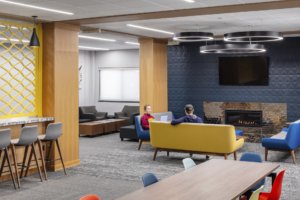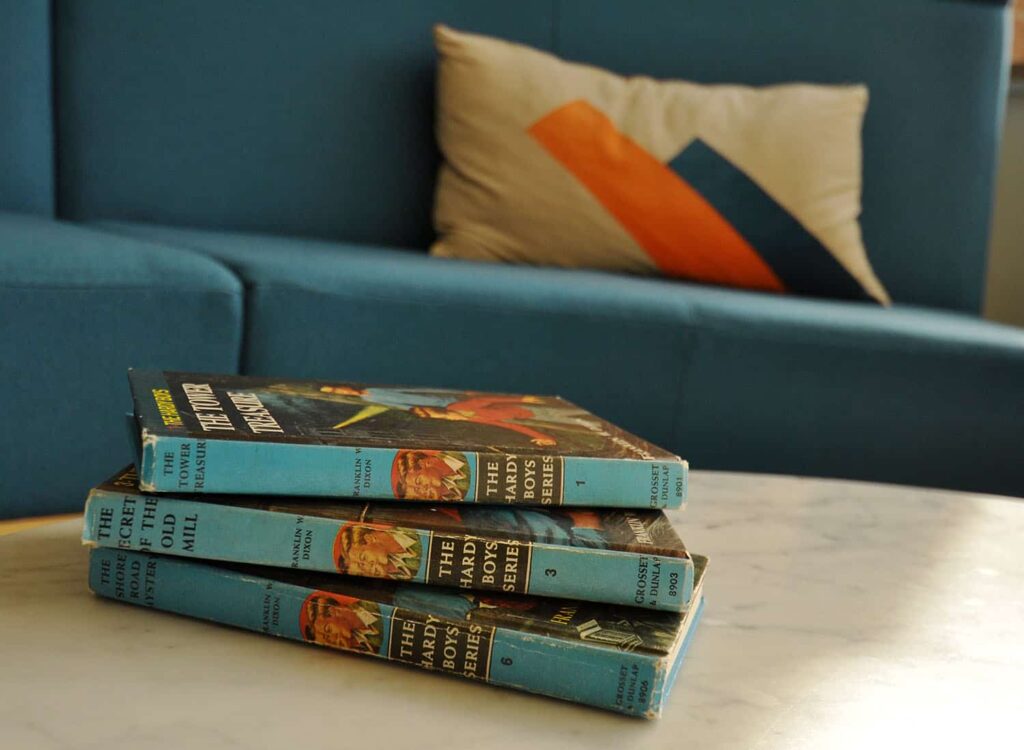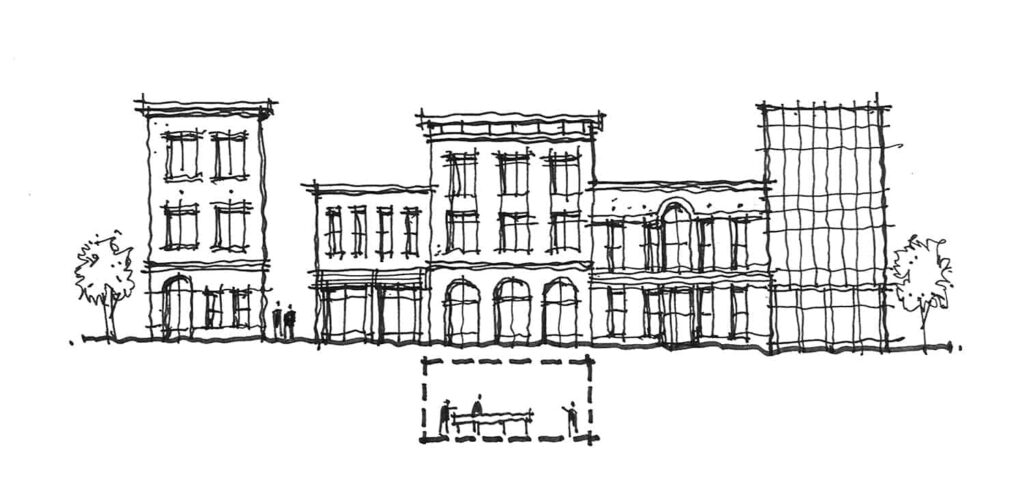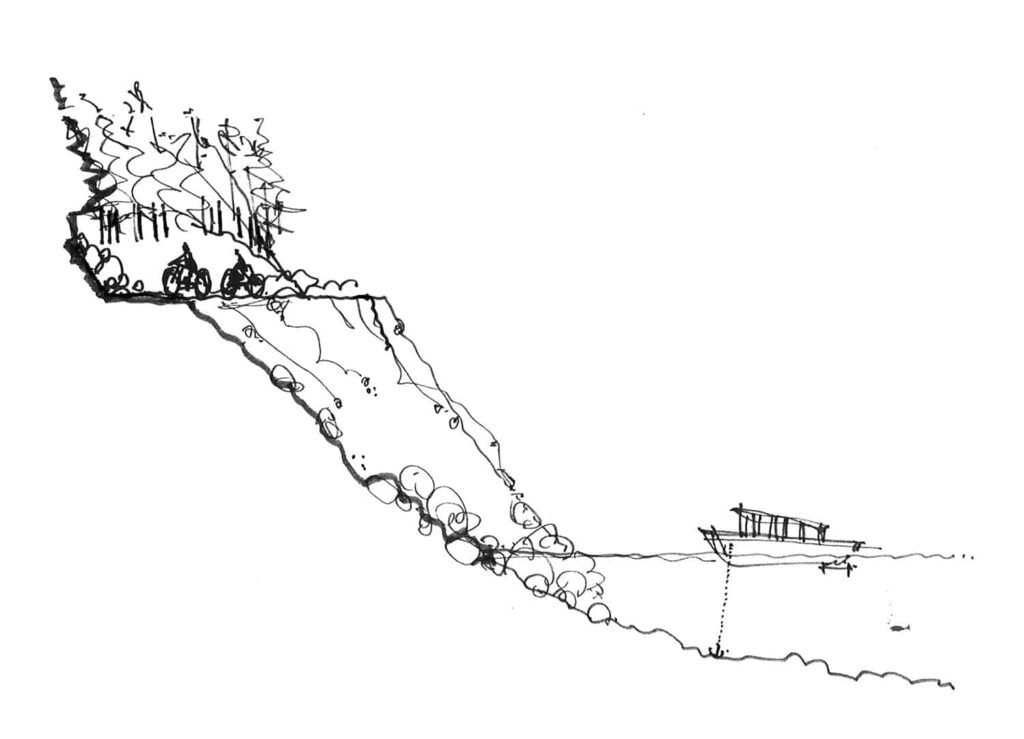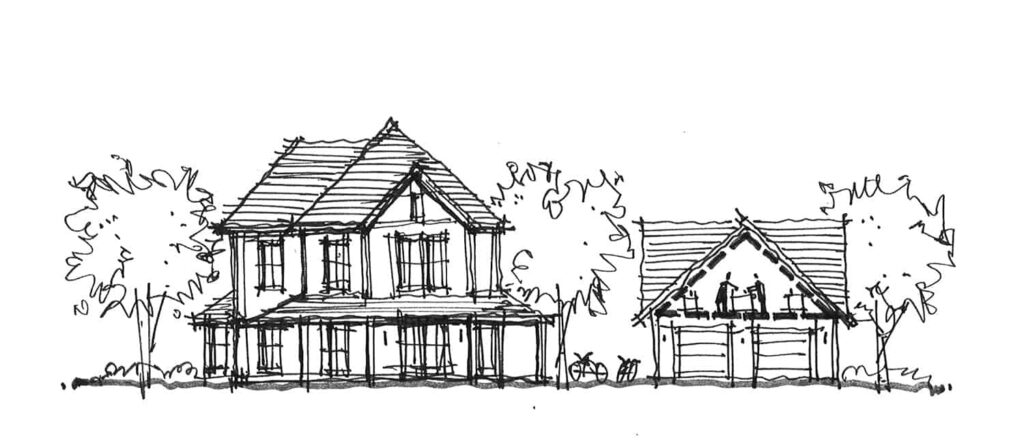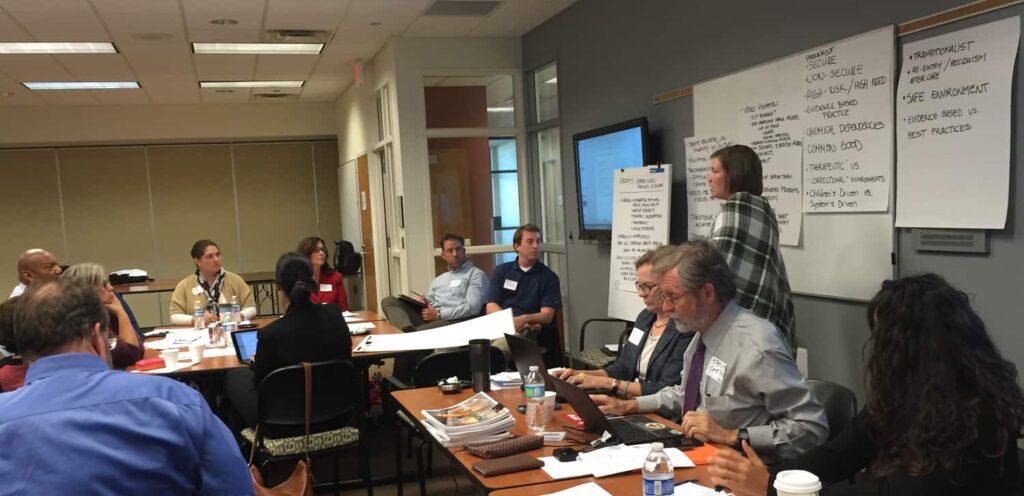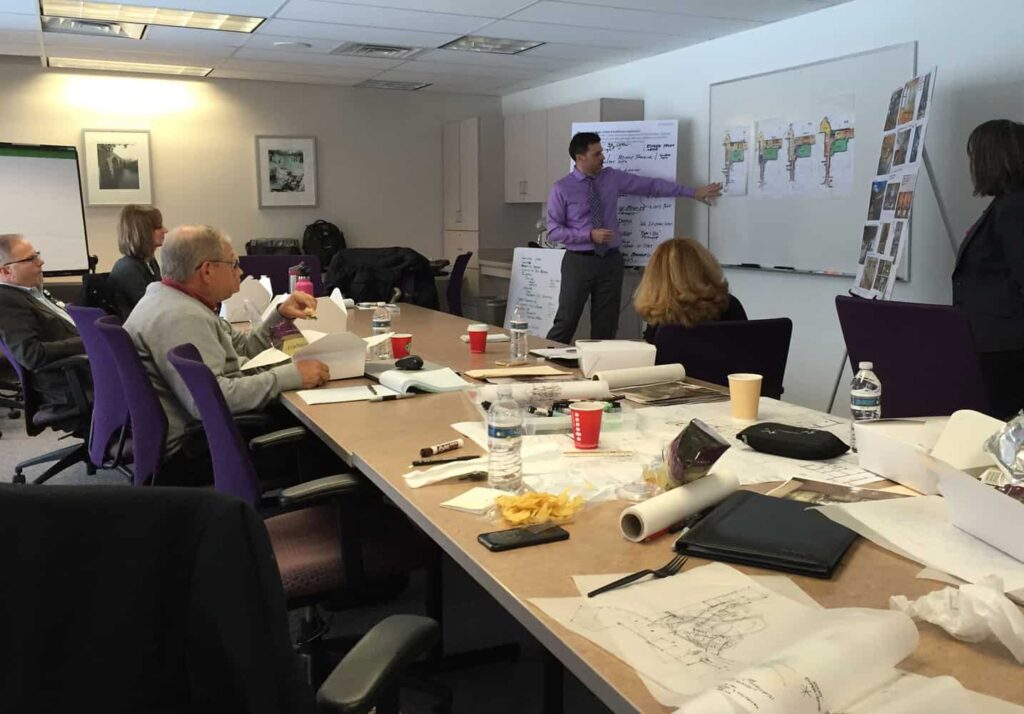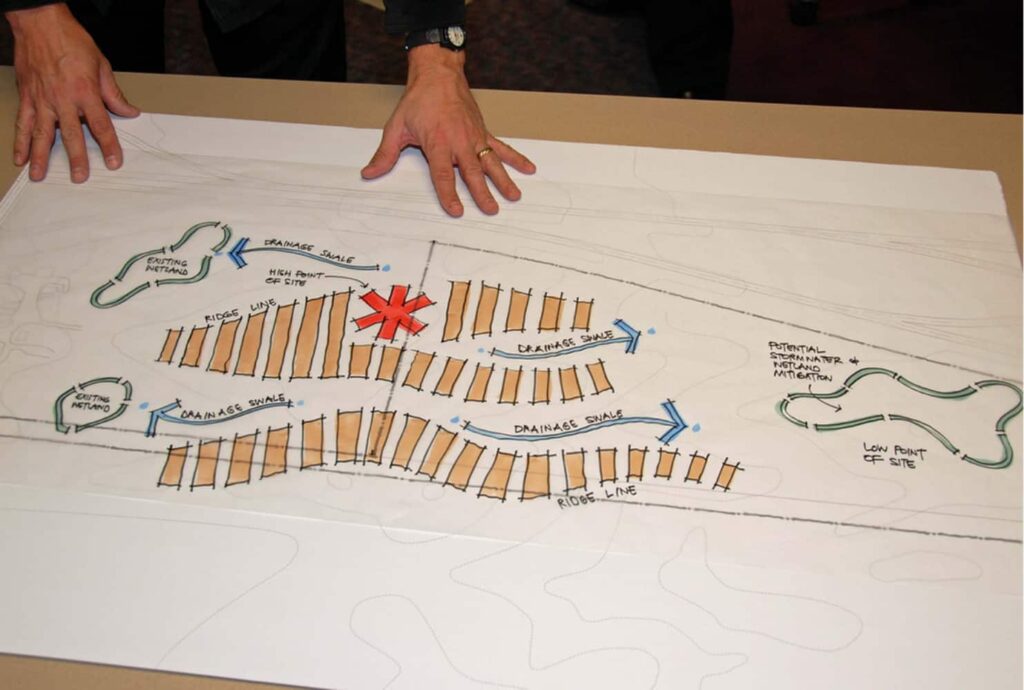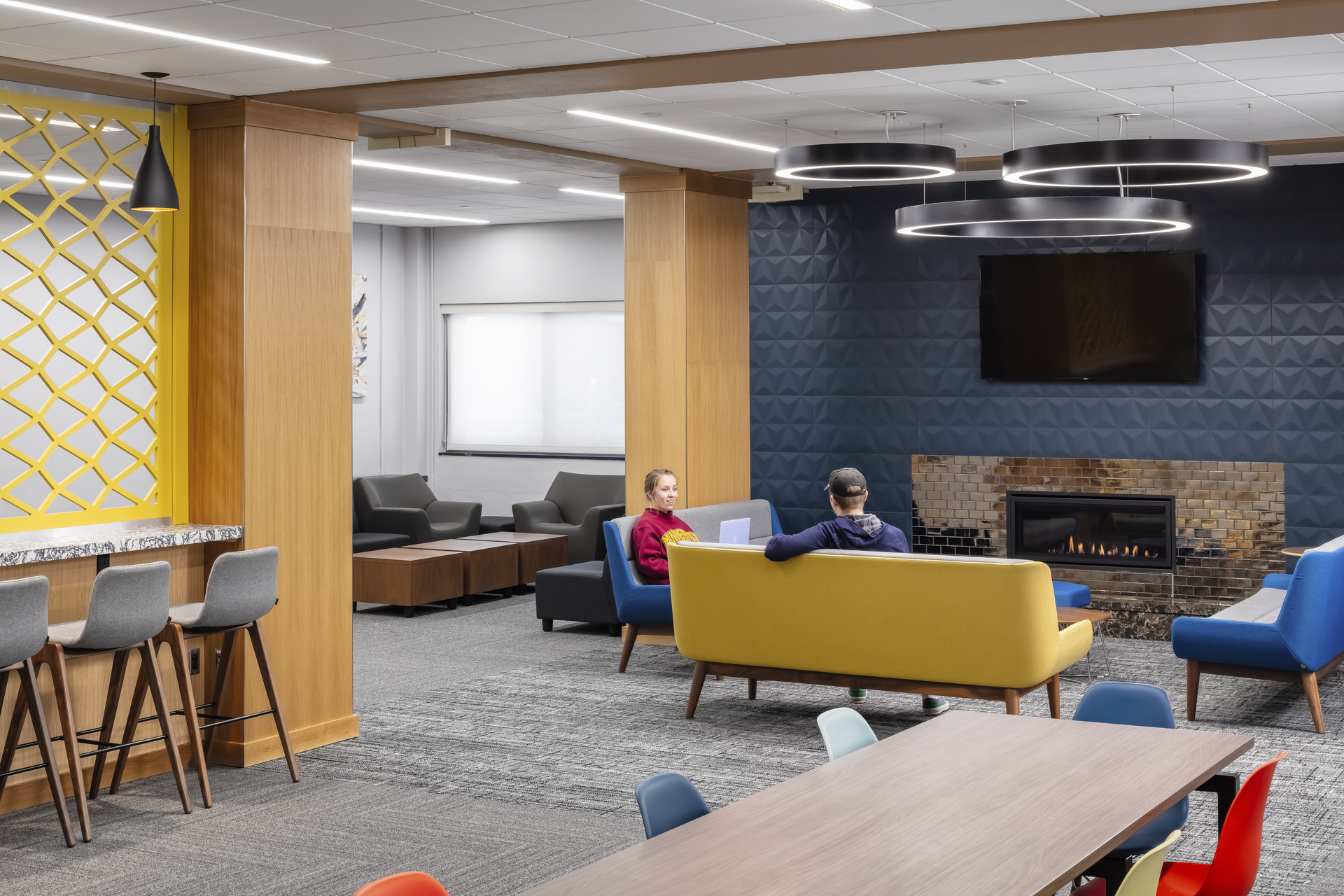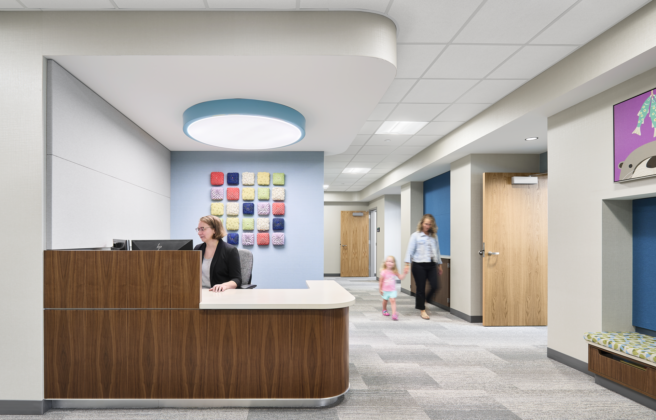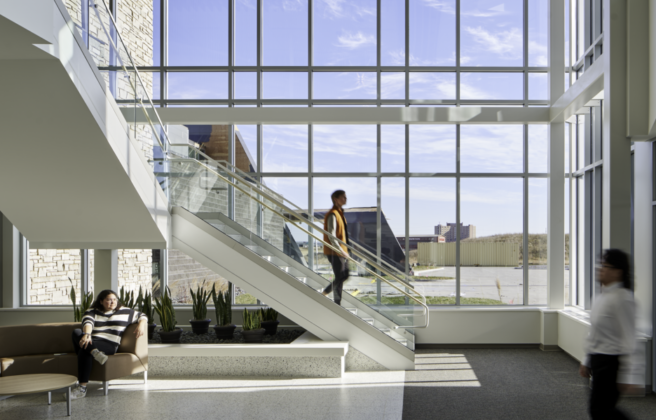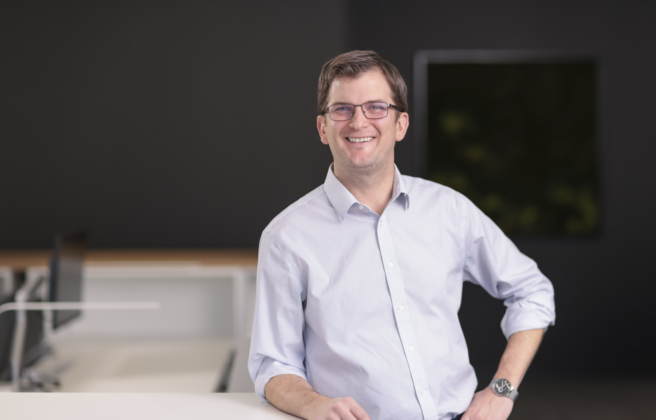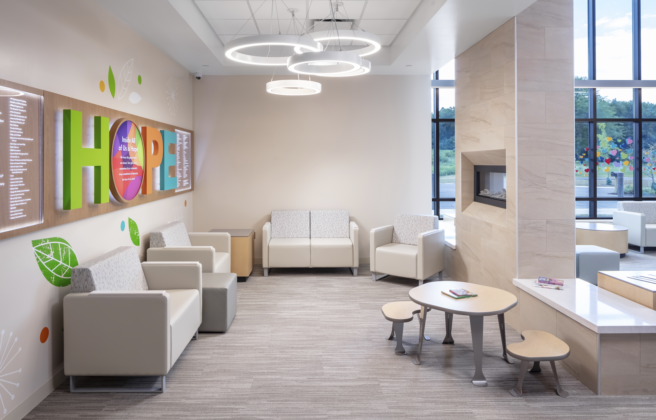I read every one of them. The Hardy Boys books.
Frank and Joe Hardy: as a pair, the two were, simply put, the epitome of awesomeness. Nevermind they were brothers. These guys were bro’s before bro’s were even invented.
Frank and Joe, book after book, bravely and resolutely took on the world’s greatest masterminds of evil – counterfeiters, thieves, smugglers, burglars, and all around tough guys – and they always cracked the case. Sure, they took some lumps from time to time, but in the end, after routinely being captured by the bad guys in Chapter 18, heroically breaking free and turning the tables in Chapter 19, and then neatly wrapping up the loose ends in Chapter 20, the boys always prevailed.
The boys’ father, Fenton, and their mother, Laura, probably ought to be taken to task for raising these kids in what was apparently the most notorious hot bed of criminal activity on the Atlantic coast. Every single case took place in, or was at least connected to, their fictional hometown of Bayport. This seething nest of iniquity that they called home was perpetually the scene of the crime. Although I obviously have never visited the city (given its place in fictional literature), as well as its neighboring villages, I know the surrounding rocky coastline, lush woodlands, caves, and secret hideouts quite well…in my mind.
As I read and re-read each and every one of these mysteries, this place was very real. Without any real effort, my mind’s eye created the city (seemingly quiet and bucolic, with neat, vibrant buildings of brick and stone and graceful arches and colorful awnings, but with occasional foundations falling into decay in an underbelly of deceit and distrust); the view of the bay (tranquil and sublime, but with an understanding that, in one or more of the vessels silently rocking in the waves, there might lurk some sort of vile endeavor); the rugged landscape of the coastal highways (steep and exciting with wide views of the vast sea, and extremely limited views around hair pin turns which might at that very moment conceal a fast approaching getaway car); and the shady tree-lined country roads (onto which floated lazy cottonwood seeds and the thick rich smells of a lush forest, and off of which run an occasional unmarked dirt path leading to a secret, long ago abandoned building, housing an automotive chop shop on the main level, a counterfeit operation in the basement, and an Asian art smuggling ring in the upper loft).
The family home – which happened for me to be an architectural replica of my childhood friend Kevin’s house but sited differently on a corner lot so that the detached garage with the boys’ laboratory upstairs could have direct street access – was imbedded in my imagination. Although each story might move differently through areas of their home and yard, the floor plan and architecture of the home, to me, was never varied, never changed, and never re-modeled. Their home was “designed” in my mind without a conceptual diagram, without the study of a multitude of options, and without any second guessing. As I read, it just happened – and was so.
The complete visualization of the Hardy Boys’ fictional world represents something I find fascinating. How, when reading, is the brain so naturally able to paint a complete and rich picture of the narrative? Now, of course, a vivid and meaningful description in the text helps, but this can only go so far; too many words get ponderous. Instead, a mood or partial image is portrayed, and the brain just effortlessly fills in the gaps. In some way the descriptive text serves to paint the frame or backdrop and then our brain grabs a brush and finishes the picture – instantly and, most intriguingly to me, without any deliberation. As we read, we just simply trust our brain to bring these places vividly and visually to life.
In the creation of architecture, a similar process occurs. The brain sorts out a solution to a problem, striving for a desired outcome, while a multitude of influences invariably manipulate and impact the design along the way. That’s the simple description.
However, the actual process can be sometimes very challenging. Stuff gets in the way. We draw, erase, model, delete, calculate, re-calculate, and re-calculate again. We force our brains to think, and re-think, and then repeat.
Often, the influences are forces beyond our control: a difficult site, a tight budget, restrictive codes or city ordinances, or sudden revisions during design. Each can pose a frustrating adversary in the desired seamlessness of a natural design process. Frustrating at times, these challenges on one level or another are inevitable realities.
We learn to navigate these churning waters by calling upon our past experiences and lessons, which might be knowing where to find the information or having the initiative to study alternatives to find the best solution. Eventually though, these very real, unavoidable challenges are like smudged text or a crumpled page: We may have to read more carefully, even re-read, or cross-reference the words, or simply squint, but ultimately we still make the connection and the words become pictures.
The parameters, priorities, paradoxes, and potentials become architecture.
On the other hand, sometimes the forces at work are within us – individually or as a team. These forces can be equally if not more challenging: doubt, second guessing, undefined or ill-defined concepts, a lack of decisiveness, a lack of leadership, a lack of confidence, a lack of communication, a change in direction. These influences can make the design process difficult, unproductive, and unclear. This can sometimes result in a seemingly endless study of options or ideas. The discovery process becomes laborious. Fears arise that the right solution is still out there, yet to be discovered.
Like dealing with external forces, experience here can also make a difference. Similar past projects can serve to guide us to similar new solutions, pulling from those previous, malleable, adaptable ideas and experiences. These difficult forces then might be seen as blurry or distorted text, made so by our own lack of vision. Therefore the picture can’t be completely painted because the canvas is obscured.
Despite the strength of these internal challenges, there are two, important and useful themes upon which to draw to help us overcome and move forward.
Clarity allows us to focus, to make clear and push aside distractions. This is a clarity of purpose, a clarity of process, and a clarity of design. A clear purpose sets the priorities, a clear process guides and communicates, and a clear design strives for simplicity – in functional relationships, technical resolve, and visual statement. When allowed to relax and just think, like when we read, our brains can naturally and quickly and simply create.
Trust allows us to believe and be our best. Once we understand the problem fully, we trust ourselves, each other, and the process with the confidence that the best solution will emerge because we trust that we will get there, and that we will recognize that place when we arrive. Granted, trust must typically be earned, and experience helps to build this trust, but, in some capacity, we need to always trust ourselves and then extend this trust to others. We then are no longer like a journalist at the scene of a story, waiting and wondering if there will even be a story; we are like a novelist, writing a great novel. The framework is there, and the details are needing refinement, but the tale will be told.
The Hardy Boys lived and played and fought crime in the world I created for them in my mind. I didn’t think long and hard about what it looked like. I didn’t re-think it. It just happened – instant, vivid architecture. Obviously, in the real world, the stakes are higher. We have to get it right. But maybe there’s a lesson to be learned from the author of the Hardy Boys: Keep it simple, and trust your words. Strive for clarity and learn to trust.
Can the real world we create for ourselves be found first in our minds if we let our minds show it to us?

